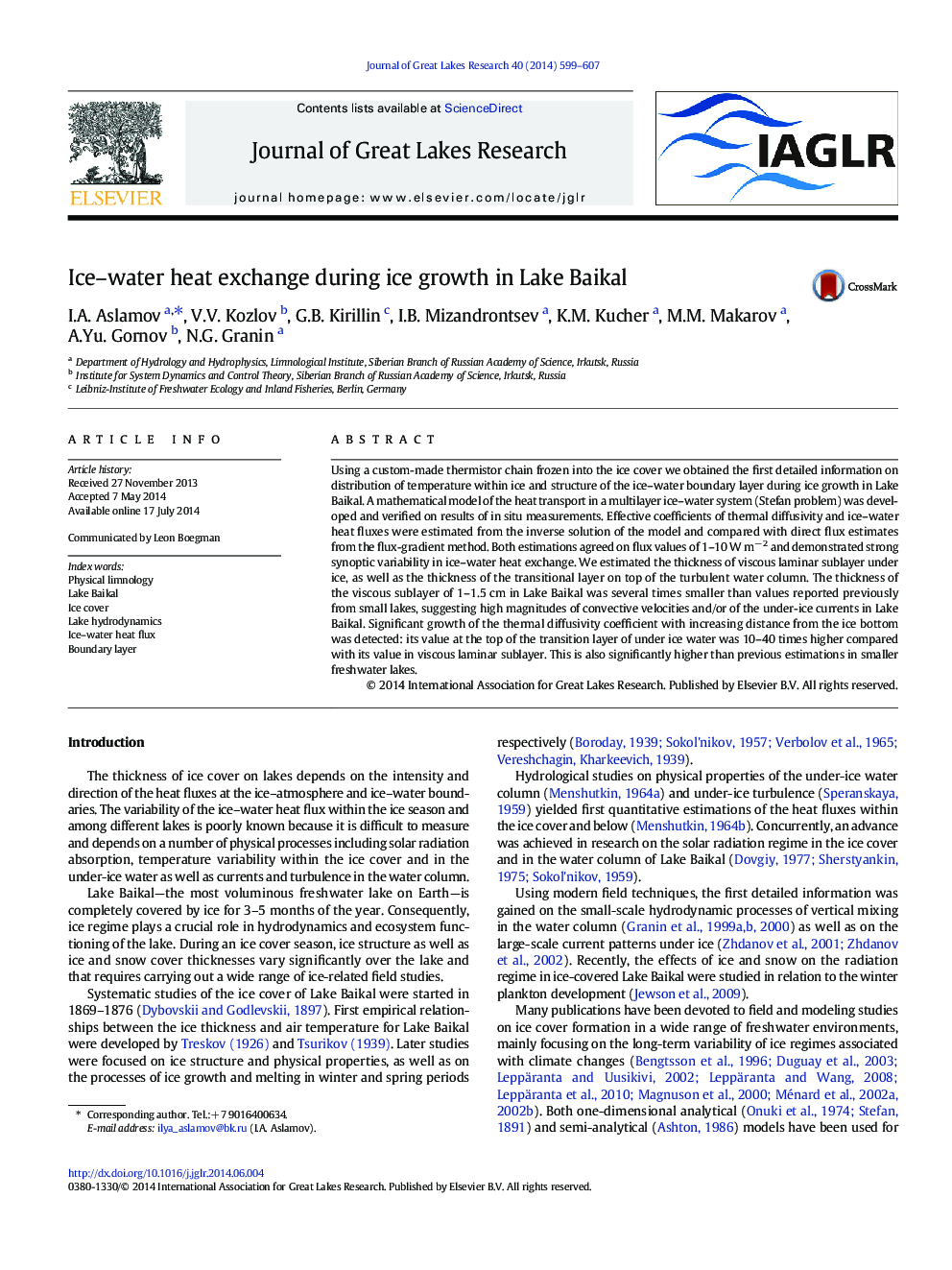| Article ID | Journal | Published Year | Pages | File Type |
|---|---|---|---|---|
| 6305287 | Journal of Great Lakes Research | 2014 | 9 Pages |
Abstract
Using a custom-made thermistor chain frozen into the ice cover we obtained the first detailed information on distribution of temperature within ice and structure of the ice-water boundary layer during ice growth in Lake Baikal. A mathematical model of the heat transport in a multilayer ice-water system (Stefan problem) was developed and verified on results of in situ measurements. Effective coefficients of thermal diffusivity and ice-water heat fluxes were estimated from the inverse solution of the model and compared with direct flux estimates from the flux-gradient method. Both estimations agreed on flux values of 1-10 W mâ 2 and demonstrated strong synoptic variability in ice-water heat exchange. We estimated the thickness of viscous laminar sublayer under ice, as well as the thickness of the transitional layer on top of the turbulent water column. The thickness of the viscous sublayer of 1-1.5 cm in Lake Baikal was several times smaller than values reported previously from small lakes, suggesting high magnitudes of convective velocities and/or of the under-ice currents in Lake Baikal. Significant growth of the thermal diffusivity coefficient with increasing distance from the ice bottom was detected: its value at the top of the transition layer of under ice water was 10-40 times higher compared with its value in viscous laminar sublayer. This is also significantly higher than previous estimations in smaller freshwater lakes.
Related Topics
Physical Sciences and Engineering
Earth and Planetary Sciences
Earth and Planetary Sciences (General)
Authors
I.A. Aslamov, V.V. Kozlov, G.B. Kirillin, I.B. Mizandrontsev, K.M. Kucher, M.M. Makarov, A.Yu. Gornov, N.G. Granin,
